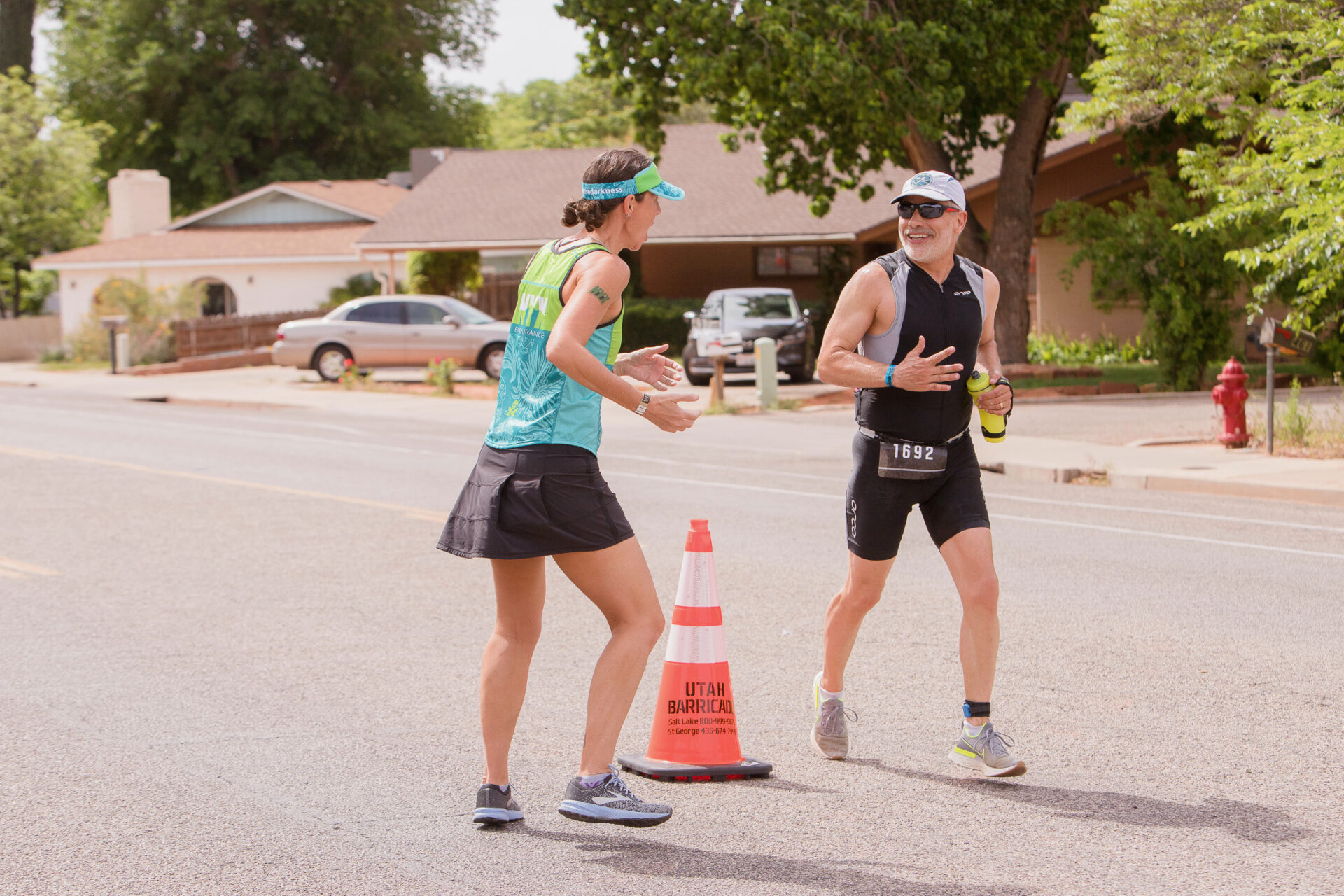There are many coaches who have built thriving businesses with a narrow focus—a certain type of athlete, a single sport, or a subset of an endurance sport (e.g., Ironman, ultra, gravel, etc.). But a new coach typically starts with a much broader clientele.
Most new coaching businesses will take on any athlete who appears to be able to pay in a timely manner. Many coaches have started successful careers by first working with a wide variety of sports and athletes. Like most coaches, in the early days of my business I had to pay the bills so couldn’t be too picky. I preferred to work with road cyclists, mountain bikers, runners, and triathletes. Yet, somehow, I also wound-up coaching rowers, endurance horse racers (the riders, not the horses), and a female firefighter who had to pass a grueling physical test annually to keep her job. I knew nothing about the challenges these clients faced until I started working with them. Then I had to learn fast. It took about 15 years to focus my business exclusively on coaching road cyclists and triathletes.
Expand your client base
So how do you grow your business? First, you need to define who you are as a coach. What sports and what types of clients do you prefer to work with? Who are you willing to coach now as you get started? Who would you like your clientele to be in the not-too-distant future? And how long will it take to get there? Any plan for growth begins with providing a valuable service to your current clients and being open to the opportunities that arise.
Pay-to-play clients
There are pros and cons to coaching different kinds of athletes regardless of their sports. For example, some types of clients will happily pay a high fee. Sounds good, huh? These are unique athletes who are serious about their sport, who may also be wealthy, have set challenging goals, and have a high regard for you as a coach. (At one point I coached the tenth wealthiest person in the world. But that’s a story for another time.)
Generally, such clients are few and far between when you’re just getting started. If you are able to get such a client onboard early in your career, treat them with high regard and provide superior service. They most certainly have friends who fit into the same category. This is a great opportunity to grow your company. But it goes without saying that maintaining excellent client relationships as the backbone of your marketing plan and applies to everyone you coach—not just the wealthy sport enthusiast.
Entry-level clients
You’re more than likely to start out coaching athletes who are at the entry level in their sports, know little about you, are not sure they’re doing the right thing by hiring you, want to keep their out-of-pocket expenses quite limited, and their option to terminate your coaching quite easy. If you’re new to coaching, you really can’t turn these people away. Unlike the wealthy athlete, these clients are likely to be the base of your coaching business for some time.
Make it a priority to provide great service to them (within the confines of your service agreement but with occasional exceptions) so that they tell their friends about your exceptional coaching services. This when your business starts growing.
There is no doubt that word of mouth is the single most effective marketing tool there is. Nothing is more effective in growing your business than a satisfied customer telling several others. But don’t plan on such growth happening overnight. Close attention to each athlete’s unique needs will soon set you apart from your competition and lead to more client inquiries. You must be patient.
Define a range of services
All of this is why so many coaches offer different levels of service allowing them to take on clients who are willing to pay at a level they can afford for a uniquely priced service the coach provides. A range of services and fees will be attractive to many types of clients.
You probably need to offer three levels: a low-fee with reduced services option, a mid-range of services and fees, and a top-end level of service for those who can afford it. You are basically trying to make it easy for an athlete to find some way of working with you as their coach. This breakout helps you grow branches of your business that bring in clients at a level they see as right for them.
You may even surprisingly find that lower fees with less service fits your needs exactly. And having multiple levels of service opens the door to having assistant coaches to whom you can refer the “extra” athletes—and hopefully that coach is a better match for the athlete’s needs. Your business grows. The athlete gets a coach. The assistant coach gets a client. Everyone wins.
The bottom line is that you need to start defining your business now as you are get started and what your vision of it is for the future. As a new coach you must realize that just because you now have a coaching license and have made it known to your friends that you are open for business doesn’t mean that athletes are going to come to you in droves. It works the opposite way; it starts with you. You’ve got to figure out a way to reach out to athletes in your market to entice them to hire you.
Continually seek out prospective clients
Be aware that a vast influx of clients won’t happen overnight no matter what you do. Getting to the point with your business in which you have a waiting list and assistant coaches takes time, usually years. Make time to talk with a lot of potential clients to find patterns—and opportunities. The answers you want to ultimately know are: Who is your most likely market? How will you reach that market? What services are they most likely to pay for? What are they willing to pay for your various levels of services?
To help you find potential clients look first to your sport federation. They may have unique services for identifying and referring potential clients. Search their website but also talk with the federation’s coach education director about such services. Of course, you have to be a certified coach to do this. That’s also a given. And check out the TrainingPeaks athlete referral program.
Don’t expect immediate success. Growing your clientele is also much like endurance sport training—it takes the right methods applied consistently over a long time. You’ve got to dedicate a huge chunk of your time and effort into producing success. And if you give up on the path you’ve settled on there will be a significant setback. Knowing the right ingredients and being dedicated to applying them relentlessly over a long time is what ultimately produces a thriving coaching business, just as it does a successful athlete.
Don’t miss these additional resources: Craft of Coaching Module 3 // The Business of Coaching, and How to Grow Your Coaching Business, a Craft of Coaching Playbook from Philip Hatzis.





